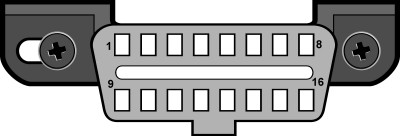Volkswagen, like all car manufacturers selling vehicles in the US after 1996, adheres to the OBD-II (On-Board Diagnostics, second generation) standard. This system allows external devices to access diagnostic information from the vehicle’s engine control unit (ECU). Understanding the specific Vw Obd2 Protocol your car uses is crucial for effective diagnostics and troubleshooting.
While the OBD-II standard is universal, the specific communication protocol can vary. Five primary protocols exist: J1850 PWM, J1850 VPW, ISO9141-2, ISO14230-4 (Keyword Protocol 2000), and ISO15765-4/SAE J2480 (CAN). Initially, US manufacturers, including Volkswagen, utilized various protocols. However, from the 2008 model year onwards, all Volkswagen vehicles adopted the CAN (Controller Area Network) protocol. European Union OBD legislation has a more complex rollout schedule.
Identifying your Volkswagen’s OBD2 protocol often involves examining the Diagnostic Link Connector (DLC), commonly located under the dashboard on the driver’s side. The SAE J1962 standard defines two DLC types: Type A and Type B, differing primarily in the alignment tab’s shape.
Fig. 1 – J1962 Vehicle Connector, Type A: Common in many vehicles
Type A DLCs are typically positioned within a specific area easily accessible from the driver’s seat, often between the steering column and the vehicle centerline.
Fig. 2 – J1962 Vehicle Connector, Type B: Less common design
Type B DLCs have more flexible placement within the driver’s compartment, potentially accessible even from the passenger seat or outside the vehicle.
The DLC pinout reveals the communication protocol. Specific pins indicate which protocol is in use.
Fig. 3 – OBD-II DLC Pinout: Pin assignments for various protocols.
The presence or absence of specific pins determines the protocol: If pin 2 and 10 are present, it suggests J1850 PWM. J1850 VPW requires pin 2 but not pin 10. ISO9141/14230 utilizes pin 7, and CAN requires pins 6 and 14.
In summary, although all post-1996 Volkswagens in the US are OBD-II compliant, the specific VW OBD2 protocol can vary depending on the model year. While earlier models might use various protocols, models from 2008 onward consistently use the CAN protocol. Identifying the correct protocol is essential for successful vehicle diagnostics using OBD-II scanners. Consulting resources like online OBD-II protocol charts specific to Volkswagen can provide more precise information for your particular model.

